The complete guide how to choose a paramotor
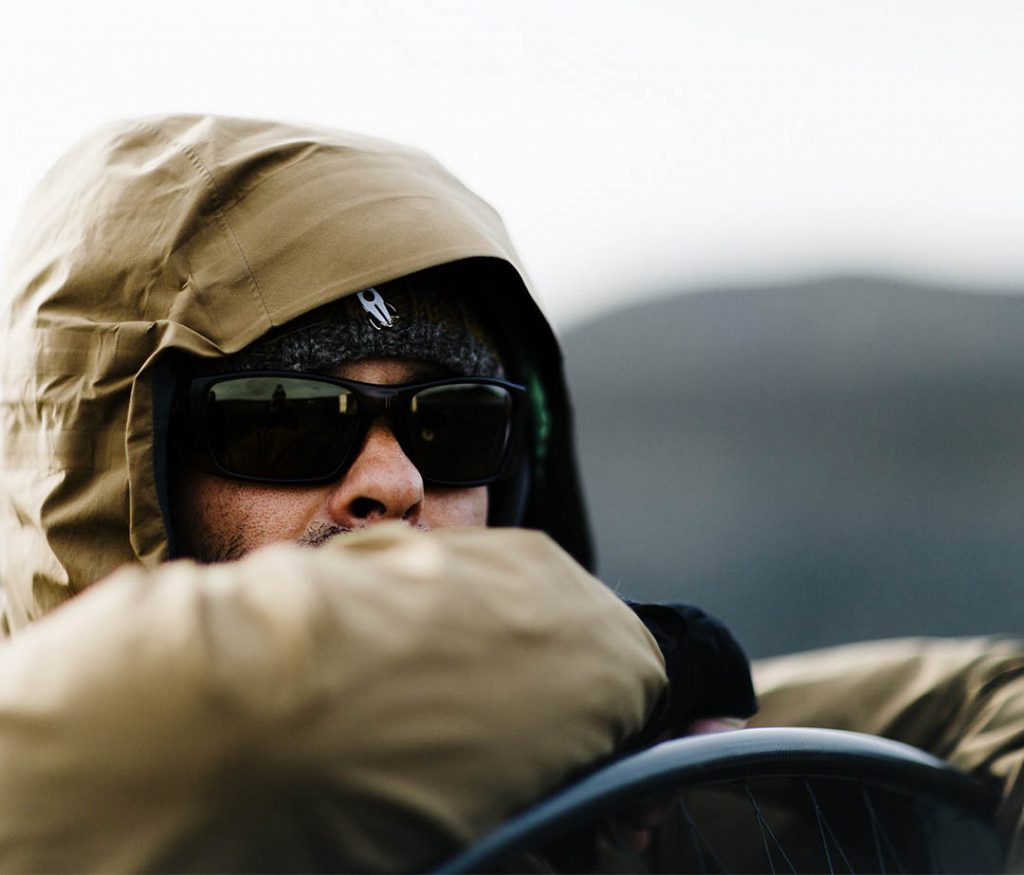
Now this is a complicated task. No, paramotors are not same by far! There are big differences.We will try to give you unbiased comparison (no, the SCOUT will not always be a winner) and to give honest advice on how to choose a paramotor!
Most beginners start with the engine because it is easy to compare the numbers but this is by far not the most important thing. Experienced pilots know that there are huge differences in how the paramotor feels when you fly it. This is determined by paramotor geometry and plenty of small details, while not all of them are possible to measure.
As a beginner you may not be able to decide upon this but get different opinions. The brand your instructor is dealer of may not be always be the best for you.
List of paramotor features/aspects you should consider when choosing a paramotor:
– How much power do you need?
– What hook-in system is best for you?
– Standard 125cm prop or larger?
– Do you need a clutch?
– Electric or manual starter?
– Is aerodynamics important?
– Strength and repairability?
– Transport and travel with your paramotor?
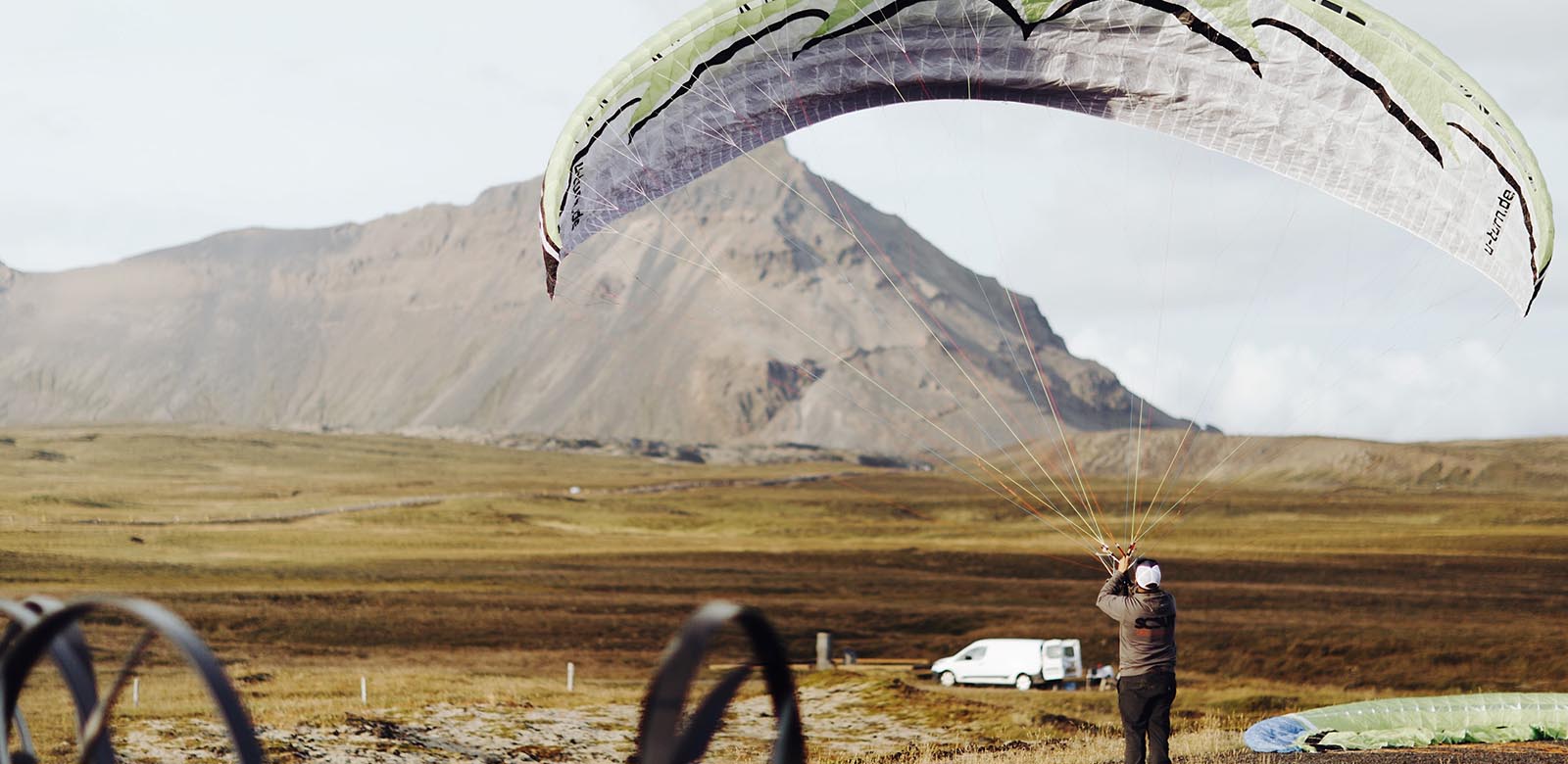
Start with a beginner wing now and you will probably upgrade to a faster wing later. But you can keep your paramotor for many years if you have chosen properly.
You will be not able to answer these questions before thinking about ,,How to choose a paramotor,, :
What is (will be) your flying style?
How to choose a paramotor:
This is the crucial question, although for a beginner sometimes hard to answer. Basically there are four possible answers>
– cross country cruiser
– low-level-fun/slalom addict
– acro madman
– thermalling junkie
Cross-country cruiser> Is it the birds-eye perspective on long crosscountry flights what you seek from paramotoring? Launch, gain altitude, let the brake toggles go and fly fast and far.
Or is there more to it?
Flying will never get boring but it is natural to human to seek progress. It may happen that after some airtime you look for some more adrenaline. You may look for disciplines where you could learn/show more skills.
If yes, you will have much higher requirements on your paramotor and your priorities will change.
How to choose a paramotor:
Yes, of course it depends on your weight and glider size/type. As this is a beginner’s guide I will assume you fly a properly sized glider within its certified weight range so let´s skip this for a while.
If you are musculous, you will need more power>
1. start with 15HP if you are 70kg
2. add 1HP for every 5 kg above 70kg
This will be enough to get you in the air. As a general rule, more power = more fun. You cannot really have too much.
Cross-country pilot:
The rule above is a good guide. If you are light go for a TOP80 engine or EOS 100. While your weight is around 90kg, 20 HP would get you in the air with a sufficient safety margin for climb out. This is the
minimum you need, now the question is why not have more? Having excess power has pros and cons>
| Pros of extra power for XC flights | Cons of extra power for XC flights |
| Shorter run on launch | More weight |
| Higher climb rate | More fuel burn = shorter time and distance to fly |
Possibility to fly very fast wings in the future |

Low-level fun / slalom addict:
There are many reasons why you will need plenty of power. Actually power is never too much in this discipline. First, small gliders are more fun so you will likely move to a smaller and smaller wing over time. You will probably fly a reflex glider that are known for lower efficiency and need more power. So if you fly a 28 sqm EN-B glider you will probably downsize to 18-20 a few years later (competition pilots fly 15-16). To fly fast you will let the trimmers up and push the speed bar. Believe me, you will need a lot of power.
Secondly, you use the power to push you around the pylon. Once you are in the turn and banked your goal is to make the glider fly slow and push your body around as fast as possible. You want your body to overcome the glider. Glider slowed down and your body fast means small turn radius and a powerful motor will push you out of the turn more quickly. This is the moment when you fly at full power no matter how much it is.

Acro madman:
Flying acro is full of ups and downs. The downs are very fast (spiral, SAT, wingovers, …) so after a short while you will find yourself climbing back to gain altitude for the next maneuvers.
So acro pilots either fly with engine off or at full power. With a small engine, the climb will take ages.

Thermalling XC pilot:
Get a small one. You only need some power at the beginning to get yourself up in the air. Then you turn it off and find the thermals.
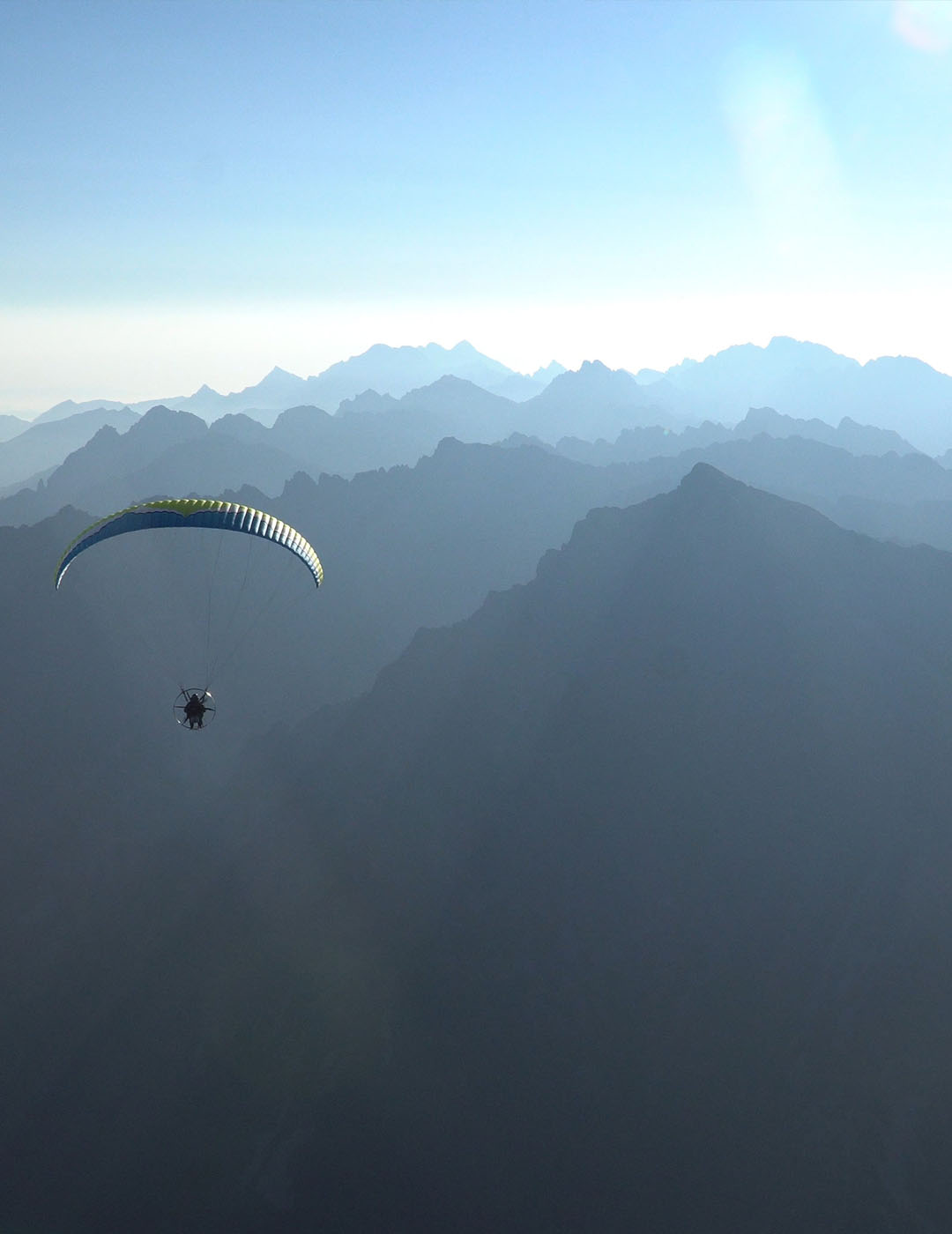
Conclusion: More power gives you more possibilities to try
other disciplines other than cross-country.
How to choose a paramotor:
Hook-in system is in my opinion the most important choice you make when buying a paramotor.
The hook-in system gives you the feel of the glider and makes handling better or bad. You may replace the motor later if you like but its hook-in point is defined by the frame and harness. So make a proper decision now.
The main aspect of the hook-in system is the weigh-shift ability. This determines to what extent you can steer your glider with leaning your body to side. Those who have a free-flying paragliding background, know how valuable weight-shift is. For others, here is a simple rule>
A turn initiated with weight-shift AND brake is:
– faster and tighter: A turn initiated with weight-shift and brake is two times faster than only with brake.
– safer: For the same turn dynamics half the brake amount is sufficient if weight-shift is added. Pulling less brake means lower risk of stalling the glider. Accidents happen mostly when pilots need to turn immediately after launch into the opposite direction of torque. Torque at full power is very strong and acts like weight-shift into undesired direction. The glider is slow and in such case pulling a lot of brake may cause a spin or stall at low altitude. Leaning your body would help a lot.
– more efficient: As you are pulling less brake and the profile gets less distorted. Brake increases drag and the glide is worse.
– dives less: This means that the turn is more flat and you lose less altitude. Pulling hard on brake causes not only bank but also yaw, that means the glider points down and flies towards gorund. Weigh-shift only makes the glider bank and the turn is nice and clean.
Look, Lean, Pull
This is why every instructor in paragliding teaches students to>
1. look
2. lean (weight-shift)
3. pull
Unfortunately, many paramotors on the market do not allow any weightshift -yes, I am referring to the high hook-in paramotors, where you have the carabiners placed somewhere around your ears an you have no place to lean to.
I have written a complete guide to hook-in systems here>.
Yes, its long but worth to read.
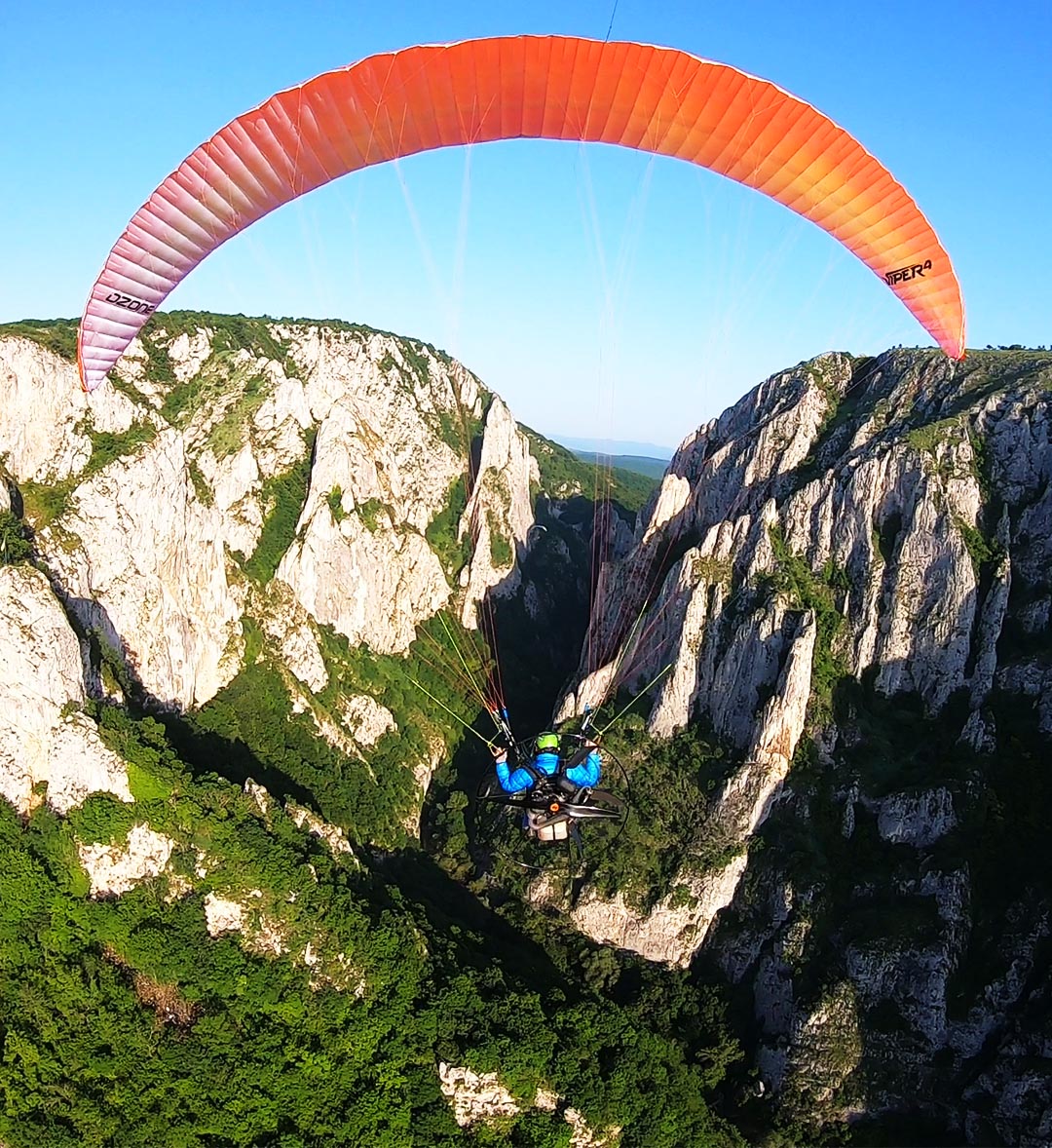
Summary

I have tried hard to convince you that weight-shift ability is good. Some may argue that for beginner the high hook-in system is the easiest to learn but this is just bull-sh*t (#salespitch). There is absolutely no reason for that.
Conclusion? If you don’t know, go for the goose-neck bars. You won’t go wrong.
How to choose a paramotor:
Quick and immediate answer> go for the large if your hands are long enough.
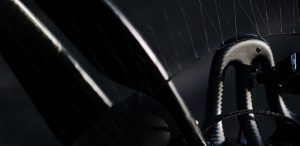
Given the same engine, large prop will have>
– slightly higher maximum thrust
– a lot more thrust in midrange thus better fuel economy at cruise
– less torque.
Ok, but is an increase from 125 to say 132 cm relevant? It only 5%!
Let us do the math and physics. I will do some simplifications to make it easy.
On every prop, the middle part of about 40 cm is not effective because>
– the profile close to the center is determined by the locking mechanism and is far from optimal
– the speed of rotation is very low. The prop tip moves very fast but the center not.
– it is hidden behind the pilot
On every prop the very end of the prop blade (say 10) cm is not effective.
This is the place where vortices are created around propeller tips. They create most of the noise and drag but no lift.

Increase in prop diameter by 5% will lead to increase in thrust by around 10%.
Conclusion> Have the paramotor cage larger by 3cm (1.2 inch) on each side and gain 10%. Come on, that’s a good deal.
How to choose a paramotor:
Many people believe that a clutch increases safety. I am not that sure.
It truly can prevent getting your lines caught into the prop when preparing to launch. This is not a dangerous accident but will damage your paramotor and probably lines too. The engine on idle has surprisingly lot of power. I have seen the lines cut through aluminum tubes like it was butter. If you had a clutch this would not happen because the prop would not spin.
Anyway, it is pretty easy to prevent lines from going into prop at pre-launch manipulation> be carefull. Yes, thats it.
Build this habit and you are safe even without clutch>
1. prepare your wing
2. pre-heat the engine on ground or on your back
3. kill the engine and come to the glider. connect the carabiners
4. now turn 180 degrees to face the glider, let the lines go around your legs. step a little sideways and back 5. to keep the lines tensioned around your legs
6. now start the motor,
7. with motor on idle turn around and launch
On the other hand, at landings a motor without clutch is an advantage. You kill your engine few meters above ground and land with a prop not spinning. Should the glider fall down on you after landing you are safe. If you had a clutch, the prop is still spinning fast and has plenty of energy.
You will definitely need the clutch if your frame is flimsy and flexible (like Miniplane). At forward launches, especially into a little more wind, the lines put a lot of pressure on the cage and squeeze it. The cage will flex backwards and get elliptical. It may easily happen that a spinning prop wouldhit the cage and you are done> both the cage and prop will be damaged.

Now you will know if you need a clutch or not. But do you know if aerodynamics
How to choose a paramotor:
Of course it is.
Aerodynamics is everything in aviation. Some may argue that speeds we fly are too low to care about but this is not true at all>
> first, there are paragliders flying 50-70 km/h and that is not little at all!
> secondly, airflow around the cage is even much higher because the propeller generates strong airflow.
Here is the proof> paraglider manufacturer try hard to increase glide ratio of paragliders. They use unsheathed lines, calculate what are the thinnest lines still strong enough and make 3-liner and 2-liner paragliders. So if that 1mm thin line makes a difference in paragliders, why paramotor manufacturers do not care?
Aerodynamics is not only about using airfoil profiles on the cage like on SCOUT. Even within classic “tube” paramotors some are better than others. These are the things that cause drag>
plenty tubes> some paramotors have double hoop and plenty tubes in the cage. This makes them stronger but definitely cause a lot of drag.
> thick netting> a netting made from thick line will obviously have a lot more drag.
> strap around netting> some paramotors have a wide strap sewed onto the edge of the netting. Well, this is uff, ohh, ehm … no good.
>fuel tank well below the pilot> a fuel tank exposed into the airflow is a very bad solution in terms of aerodynamics. There are plenty paramotors that have succeeded placing the tank nicely behind the pilot.

Now who should care?

How to choose a paramotor:
Warning: I will be biased on this topic. I have backpain and I try to save every kilogram possible. Electric starter is about 1.5-2kg more and I believe they do not add value.
Cross-country cruiser:
You will probably end up with a small motor (80-130cc) and these are easy to start. So saving those 2kg for electric starter will allow you to take 2.5 litres more fuel. So I would rather have a slightly less comfort at the start and then have almost one hour more airtime. Besides, most of the small engines are not even available with electric start so your dilemma is solved.
Low-level fun/slalom addict:
You will need a powerfull motor and your paramotor will be heavy. So add the electric only if it is very hard to start the manual. I would say anything up to 200cc is OK to start manually. Larger motors would need electric.
Acro madman:
Acro pilots tend to turn their engine off for their stunts. Even if they do not, sometimes the engines stops itself. Engines with no clutch rotate at idle. During SAT maneuver the pilot and paramotor actually fly backwards and backward airflow brakes the prop and may stall the engine. In such cases the pilot may need to restart the engine quickly. Having a button is handy.
Thermalling:
For thermalling it does not really make a difference. Maybe electric would be better as after a long flight with motor off the engine cools down and is harder to start. But once fuel evaporates from your carburetor after long flight, you may not be able to restart the engine either. On the other hand, for thermalling a small engine is perfectly sufficient and these come with manual starters anyway so your dilemma is solved. These engines usually have choke so you could assemble a wire to operate it in flight and you could restart your engine easily even after longer periond.
Conclusion:

How to choose a paramotor:
Strength
It is always good to have it strong enough for safe forward launches. With a flexible cage it is just very easy to make a mistake during launch and break the prop and/or cage. Most paramotors will do the job. One step further is resistance to small slips at landings.
It is good if the paramotor can resist that because everyone will have such “accident” from time to time. It is no dangerous but it will cost you a new prop and frame parts. It is always a trade-off for weight. A Walkerjet or a Parajet Volution might be strong but they are a lot heavier, too. No paramotor can resist a crash. But its OK. They are made for flying, not crashing.

For every increase of strength you pay with extra weight.
So its about setting your priorities and finding your compromises.
Repairability
It depends. An aluminium frame is easy to repair if you have the tools and skills. Most people do not. You can find someone to repair your broken cage but it may take more time and money to let someone do the custom work than order new parts. It of course depends on availability of spare parts and reliability of your manufacturer. Keep in mind that the most expensive thing on a broken paramotor is when it is good weather and you are grounded. So if spare parts are not available quickly and the manufacturer is not responsive, you may find yourself to miss the flying season.
Conslusion
When I look at the new modern paramotors coming out lately (Parajet Zenith, Nirvana Instinct, SCOUT carbon, …) the trend is obvious> paramotors are made for flying not crashing. If you break it, replace the broken part and get into the air as soon as possible.
a note on SCOUT> it is actually very easy to DIY repair composite parts and necessary material and tools are available… but i guess it would just look ugly on the sexy paramotor. You would not weld your bumper on a your Ferrari either, would you?
How to choose a paramotor:
This is the easy part to answer.
Will you be able to transport your paramotor assembled on a hitch rack or truck? If so, life is easy and do not care about how easy or difficult it is do disassemble.
If you need to disassemble your paramotor, how small it needs to be? If you have a van, than cage consisting of 3 or 4 parts will fit easily. The advantage is that such cage is assembled faster.
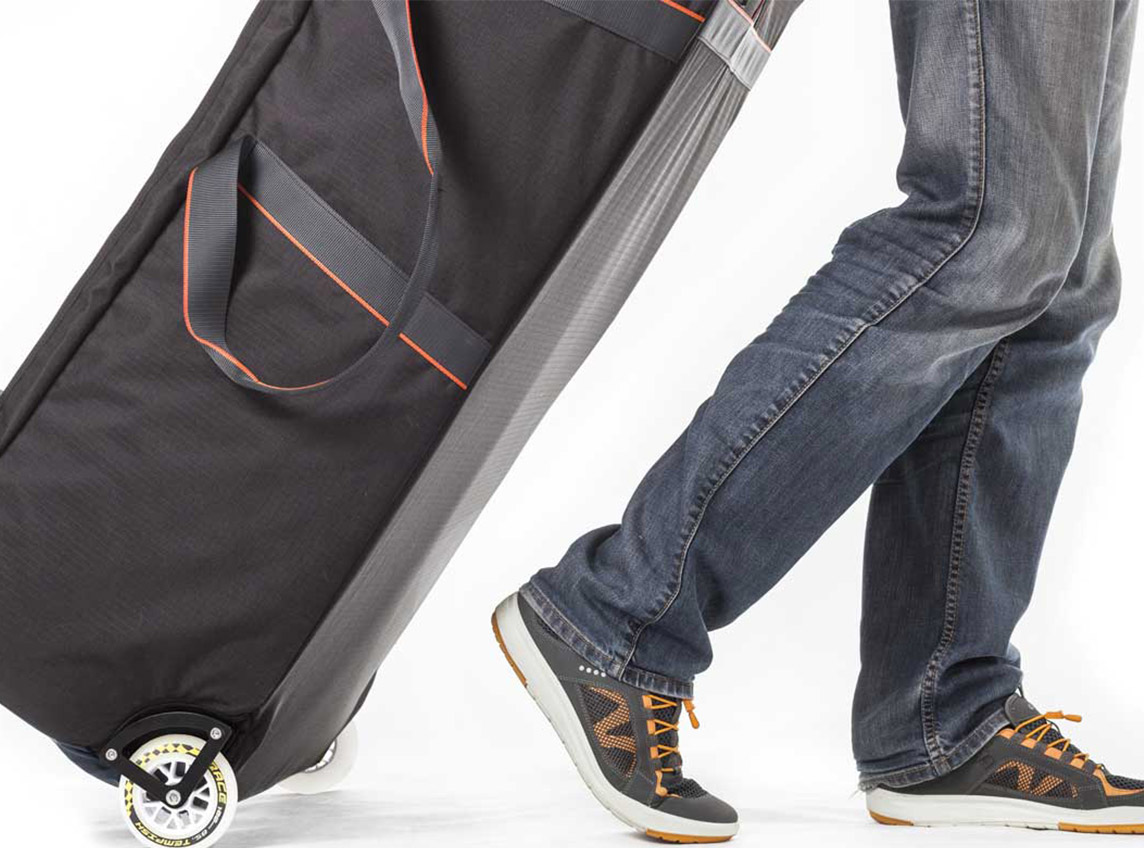
if you have a small car you will need a paramotor that comes into small parts like SCOUT, Parajet Zenith or Nirvana Instinct. Of course, it takes some more time to assemble.
But it is not only about the cage! Have a look on how bulky is the main frame? How big is the main body of the paramotor with engine, tank and harness? Is it possible to rotate the gooseneck bars all the way down to make the harness flat?
If you have plans to travel with your paramotor and visit all the amazing place where you could fly your paramotor, you definitely need one like SCOUT/Zenith/Instinct. Make your dreams come through and fly like this>
